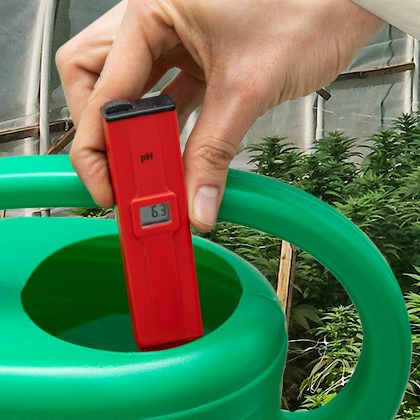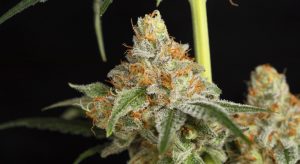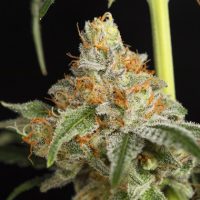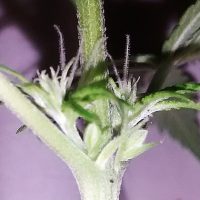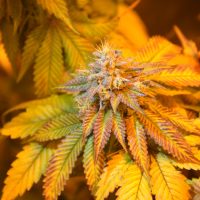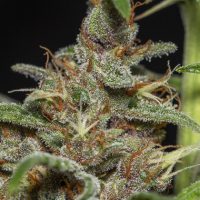Why is pH Important When Growing Cannabis?
pH indicates the acidity or alkalinity of a liquid. The pH of a liquid is determined by the concentration of positive hydrogen atoms (H+). The pH value is the hydrogen potential of a given solution, which is expressed with the following formula: pH = -log[aH+], and it’s measured in a scale of 14 points.
- 0 – 7 are acidic levels.
- 7 – 14 are alkaline levels.
- 7 is neutral.
Cannabis plants absorb nutrients from the soil or substrate they’re in. Each nutrient has a determined pH value through which it is best absorbed. If we establish an average between all of the optimal pH levels of each nutrient, you’ll be able to know what the best pH is for your plants. This level isn’t going to be the same for all substrates, fertilizers or nutrients. There are certain factors to take into account when measuring and establishing the right pH level.
- Your plants’ substrate can influence the pH value. Each substrate has its own ideal pH level for nutrient absorption. Each substrate also varies in as far as its capacity to maintain a stable pH.
- The type of nutrients used will also affect this process. Bio and natural products have a much wider range in which they can be absorbed. However, mineral products have a more exact level that must be stuck to and they don’t do well with pH fluctuations.
- Lastly, the state in which your plant is in should also be taken into account. During their life cycle, cannabis plants need macro and micro-elements in different quantities. For example, during the growth stage they need more nitrogen (N) than potassium (K) and phosphorus (P), and vice versa during the bloom stage. This means that, logically, the pH levels for each stage vary.
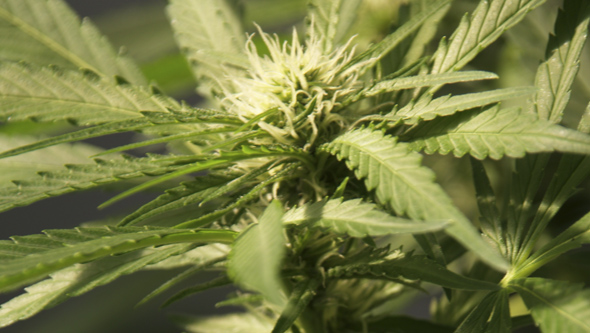
How to Measure pH In Cannabis
Let’s have a look at the different tools that you can use to check out the pH in your water:
Reactive pH Kits
This kits come with a reactive liquid that contains enough for about 500 tests, a tube and a colour chart. Fill the tube halfway with your water (with your nutrients already added in), add 3 drops of reactive solution, close the tube and shake it. Once done, compare with the colour chart to see the pH value.
Pros
- This is the most affordable way to measure pH.
- Does not require maintenance.
Cons
- Not quite as precise as an electronic pH meter, best used as a general pH guide.
- Can be confusing if used with dark products that modify the colour of your water.
- Requires more work; you need to fill the tube and add drops with each test. If you have to gradually modify your pH, this can take quite a while as you have to repeat the process every time you want to check it.
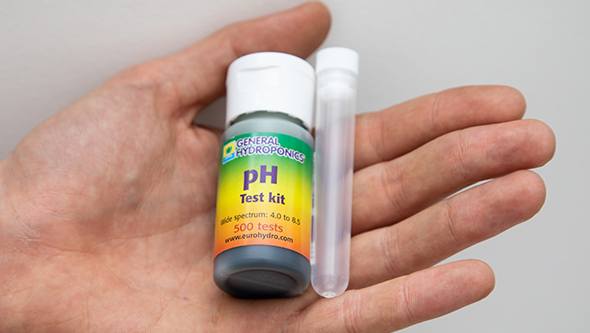
Digital pH Meter
Digital pH meters come with a sensor and a reference tube. The sensor is used to measure the hydrogen ion activity, generating tension between the sensor and the reference tube. The voltage meter turns this tension into a pH value which is shown on a small screen.
Digital meters are quite simple to use and offer exact readings. Digital meters can also come in two different types; Pocket pH Meters and Continuous pH Meters.
Pocket pH Meter
In order to use this pH meter you’ll need to place the sensor in the liquid during the measurement process.
Pros:
- More precise than reactive drops.
- Easy to use.
- Easy to transport
Cons:
- More expensive than reactive drops.
- Requires maintenance, do not let the sensor dry; you’ll need to maintain it even when not growing.
- Somewhat fragile device.
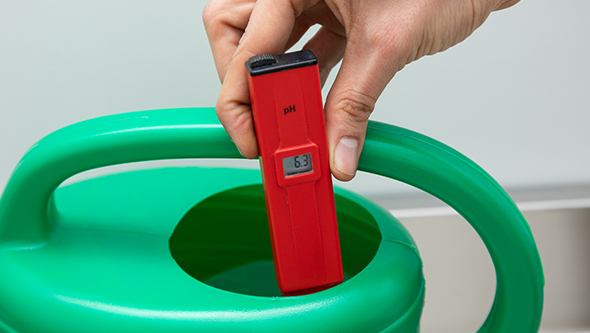
Continuous pH Meter
Continuous pH meters are the most professional, complete and precise meters on the market. The sensor is placed inside your water tank and left there, providing you with a continuous reading of your water’s pH.
Pros:
- It’s much easier to gradually adjust your pH; you can see the results in real time without having to do anything else.
- Highly precise: this type of meter is incredibly precise. The best examples of this are the pH, EC, TDS (total dissolved solids) and temperature meter, Hanna HI9811-5.
Cons:
- More expensive than the previously mentioned models.
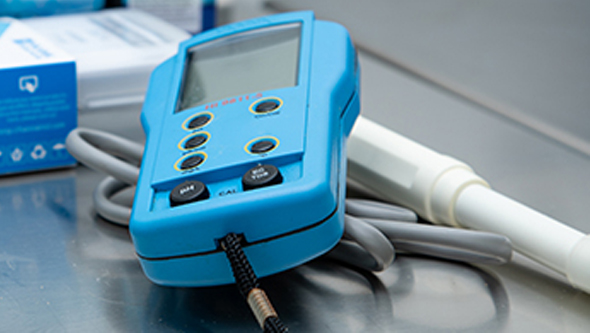
Right pH Levels for Growth Stages and Substrate
- Soil: the right pH for those growing in soil is around 6 during the growth stage and it should be progressively increased to about 7 during the bloom period.
- Coco and Hydro: during the veg stage you should start off with pH close to 5.5, increasing it slowly to 5.8 as it grows. At the start of the flowering stage it should be at 5.9, and then slowly increased up to 6.3 during the last few weeks.
- Foliar spray: when you spray your plants’ leaves, you’ll need to keep pH at 7 in all substrates.
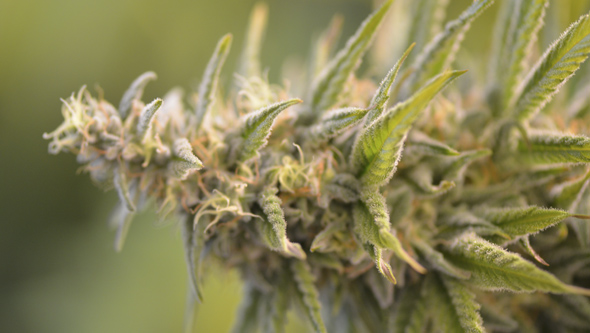
We’ve divided the growing levels in three different levels so that you can keep in mind what you need to do in each situation:
- Beginner: if you’re still learning the ins and outs of growing cannabis, you’re quite limited in this aspect as there are other more important things to learn and keep track of first.
- Professional: with large grows that can’t be watered using a normal watering can, you usually use water tanks for nutrients, for example cannabis clubs or medicinal grows, etc.
- High quality grow: if you have experience and you decide to spend a little extra in order to increase the quality of your final results, you can do so if you’re experienced. This is the best way to get the most out of your cannabis.
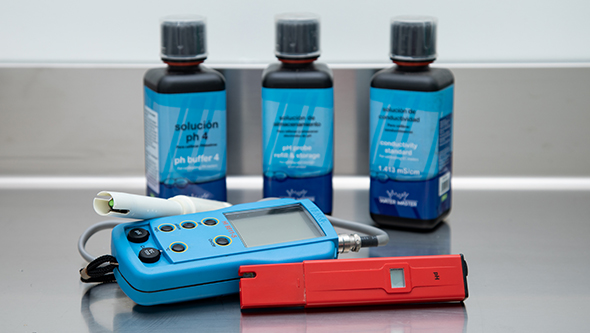
pH in Cannabis Grown In the Ground
Thanks to the organic materials found in natural soil and the reactions between the minerals, it’s much easier to maintain a stable pH level when growing in the ground compared to in a flowerpot. It’s much easier to cause a pH imbalance when growing in pots, which is why you need to be much more careful when watering.
When you grow outdoors, there are a lot more risks compared to growing indoors. For plants grown in the ground, all you need is a simple digital meter or a reactive pH test kit. If you use continuous meters you’ll obviously obtain the most exact results.
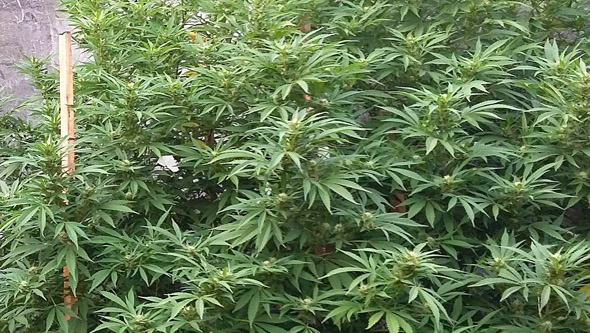
pH in Outdoor Cannabis in Pots
Outdoors when growing in flower pots you’ll need to water more often. This means that you’ll need to keep a closer eye on your pH levels as it can fluctuate quite a bit. This can be done various ways, depending on how experienced you are.
If you’re a beginner…
If you don’t have much experience growing cannabis yet, you don’t really need to worry about this; the exact pH levels in your water won’t be the determining factor of whether or not your plants survive. We recommend gaining some experience first, and once you have the growing part down you can move on to more sophisticated devices.
Professional or high quality growers
If you have some experience under your belt, you can make quite the leap in quality when it comes to growing cannabis by simply keeping a stricter control over the exact pH levels in the substrate. A decent portable pH meter will do the trick in outdoor grows.
Indoor Flower Pot Grows (soil and coco)
If you plan on spending money on lights, electricity, extractors and all sorts of devices for indoor growing, you better make sure to get yourself a good pH meter too; there’s no point in putting all of that money and effort into something that won’t be at its absolute best when finished.
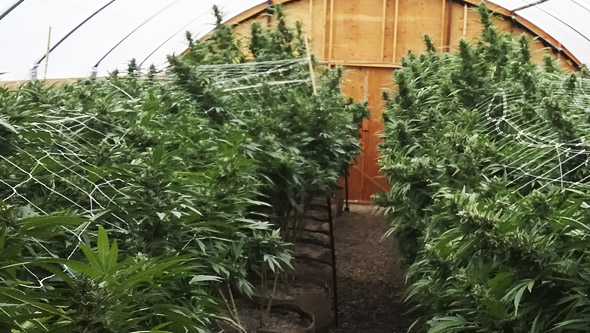
Indoor Hydroponic Grows (with or without water recirculation)
Hydroponic grows work using a water tank and your plants’ roots are in constant contact with the water as it’s the growing medium. For the most efficient and accurate readings, you need a continuous digital meter in order to get a constant reading on the water your plants’ are receiving.
Do you Need a pH Meter?
At La Huerta Grow Shop you can find everything you need to keep your cannabis plants under control. From simple reactive kits to sophisticated systems that can release pH controllers to keep your nutrient solution in the best possible condition.
- One of the best-sellers is the classic Electronic Hi 98107 pH Meter. This meter is calibrated using a screw and the pH7 calibration solution.
- Another meter by the same brand, Hanna, the pH Hanna Checker 1. This device has a removable sensor so you can replace it as needed.
- If you’re looking for something simple and affordable, you should try the Milwaukee meter.
- The pH Waterproof meter is another Hanna device; as the name suggests, it’s waterproof. It’s a great way to avoid accidents.
- If you’re looking for a continuous meter, you can try out the Hannah Grocheck continuous pH meter, which is both waterproof and has an alarm.
- We also have a pH meter and controller with a highly precise sensor. This meter has a small pump which is connected to a bottle of pH down; when the meter detects that the pH is too high, it automatically reduces the pH in your nutrient solution.
Maintaining your pH Meter
pH meters must be calibrated every now and then in order to maximize precision. They’re calibrated by submerging the sensor in a calibration solution and pressing a button or turning a screw, depending on the model. There are certain models that require the pH/ solution alone, whereas other models use an additional pH4 solution.
Maintaining your pH meter is pretty simple. Before storing it, deposit a few drops of maintenance liquid or pH7 calibration liquid in the sensor cover. Store it upright. When stored correctly, you can keep the same pH meter over various grows.
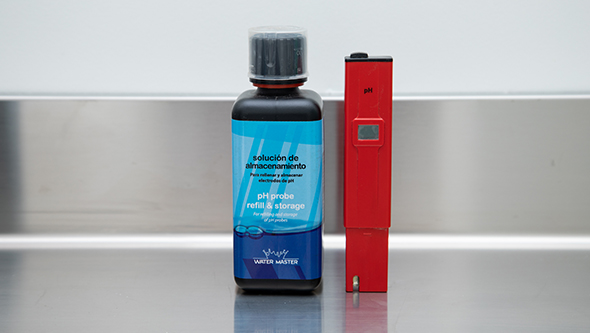
pH Controllers
When growing cannabis, pH is kept under control using a pH meter and then adjusting your nutrient solution as needed in order to increase or decrease pH levels. The objective is to make sure that your water is well between the ranges of pH levels to maximize nutrient absorption in cannabis plants during the growth and flowering stages.
You should always keep an eye on your pH and if you need to modify it you should do so very slowly; if you use too much pH decreasing liquid you won’t be able to compensate it by increasing it again or you run the risk of ruining your nutrient solution. This is why you should always use small amounts of pH Down or pH Up gradually, using a dripper if possible so that you don’t end up using too much.
Keep in mind that if you’re using tap water (running water), you’ll need to use more pH- as it usually contains a high pH due to its high amounts of minerals. If you use distilled water you won’t need as much pH- and you may even have to use pH+ to increase it.
There are certain fertilizers called pH Perfect fertilizers that automatically adjust the pH in your nutrient solution so that it’s within the right level. For example, ranges such as Micro, Bloom and Grow, as well as the Sensi Grow and Sensi Bloom, and Connoisseur Grow and Connoisseur Bloom by Advanced Nutrients.
What is EC (Electro Conductivity)
The minerals dissolved in your water are what define its EC levels. Solutions that contain more dissolved salts produce higher currents. This measurement is taken by applying a certain voltage between two electrodes on the meter, and electro-conductivity is expressed in milisiemens and microsiemens: 1 milisiemens (mS) = 1000 microsiemens (µS).
For example, reverse osmosis filters produce water with around 0.010 to 0.090 mS, which could also be represented as 20 – 90 µS. EC meters usually show measurements in milisiemens.
Why Should You Measure Electro-Conductivity?
Electro-conductivity (EC) indicates the amount of dissolved salts in your water, which can help you to determine the quality or hardness of the water and apply the correct nutrients depending on the EC level. There are various factors that can influence EC levels, such as the quality of the water itself, the fertilizers used and even the strain of cannabis that you choose to grow.
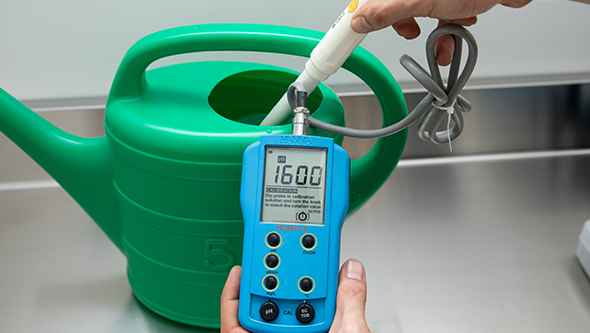
Water Quality
Not all tap water can be used to water cannabis plants. Knowing what water you’re using is absolutely essential to growing successful cannabis plants; if you use water that contains too many minerals your plants won’t be able to absorb nutrients. This can cause deficiencies and a decrease in growth and flowering. It can also directly affect the flavour and aroma of your cannabis buds.
It’s highly important to keep an eye on your water’s EC. For example, tap water usually contains calcium and magnesium that your plants need, but also more sodium, chlorine and other minerals that they don’t need. Water can be divided into four different types according to their mineral content:
Types of Water
- Very soft water: this water has an EC between 0.020 and 0.090 mS. For example, water obtained from osmosis filters or water produced by AC units are about this level. You can’t use this water directly on your plants; cannabis plants have an internal EC and if the substrate’s EC is lower than their own, they’ll try and balance it by using their own minerals. In order to avoid this you need to add to the water until it’s about 0.400 – 0.600 mS, using Calcium (C) and Magnesium (Mg). Even though it does need to be modified, osmosis water is generally the best type. This is because your plant needs that extra calcium and magnesium anyway. The correct proportion is to use 2/3 parts calcium and 1/3 part magnesium. It’s pretty easy to do; all you have to do is add Cal-Max in small amounts, keeping an eye on EC levels until it’s between 0.400 and 0.600 mS.
- Soft water: this is when EC is between 0.400 and 0.600 mS; this is considered quality, soft water for plants. You can safely use this water for making your nutrient solution without needing to modify it beforehand.
- Normal water: between 0.600 and 0.800 mS; this water is also within the acceptable range, without needing any modifications.
- Hard water: this type of water has an EC between 0.800 and 1.200+ mS. This water is usually quite problematic; it will lower the quality and quantity of your yield. In order to fix it you’ll need to use an osmosis filter.
The Right Fertilizers
The type of plant you’re growing also influences the correct EC levels; different strains can absorb different amounts of minerals. Indicas, for example, grow slowly and require less nutrients, whereas sativas and hybrids can deal with higher doses. The recommended EC levels are simply an estimated guide.
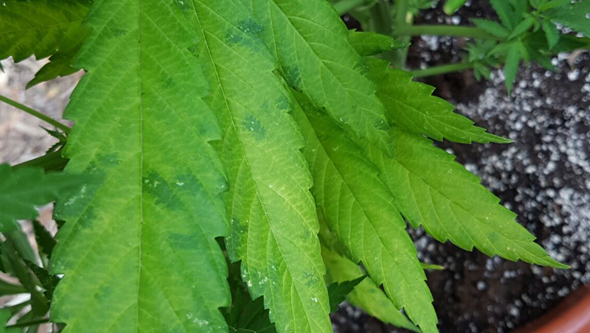
How to Measure Electro-Conductivity
In order to measure electro-conductivity, you can use two types of EC meters or conductometers.
- Pocket EC Meter: portable and small, this meter shows the results on a digital screen. Ideal for indoor and outdoor grows, in soil, coco coir etc.
- Continuous EC Meter: this allows you to keep a constant eye on your plants’, and is attached to your water tank. They are absolutely necessary for hydroponic growers that circulate water.
The Right EC in Soil and Coco
- Growth: during the first weeks it should be between 0.800 – 0.900 mS, and you’ll have to increase it to 1.100 – 1.200 mS as the growth period goes on.
- Bloom: start off with 1.200 – 1.300 mS, increasing it weekly until 1.900 – 2.000 mS. During the last coupe of weeks or 10 days you’ll need to use just water with a 0.000 – 0.400 mS EC to flush the plant.
The Right EC in Hydroponics
- Growth: during the first weeks, use water with an EC of 0.500 – 0.800 mS, and increase this weekly until 1.100 – 1.300 mS depending on the strain
- Bloom: you should use an EC of 1.300 – 1.400 during the first few flowering weeks. During the fattening stage you should increase it to 2.000 – 2.200. Over the last few weeks you should use water with an EC of 0.000 – 0.400 mS.
For pure sativa strains you may want to reduce the maximum amounts, For example, 1.800 in hydroponic grows and 1.600 in soil and coco coir.
Do you Need an EC Meter?
- At La Huerta Grow Shop you can opt for the EC Hanna HI98304, which has an automatic temperature compensation setting for the most accurate readings.
- If you’re looking for a constant EC meter, you should check out the EC Hanna-Grochek Meter, a high quality conductometer that alerts you to any changes via its red LED light.
- You can also get pH and EC meters combined into one, that also measure the temperature of your water. For example, the pH and EC Hanna Combo HI98129 meter is portable and high in quality, or the pH/EC/TDS/Temp HI9811-5 Meter, which is a highly professional model.
- Lastly, you can also use continuous pH and EC meters such as the Hanna Grocheck Combo Continuous meter. This is ideal for growers that grow in hydroponic systems. This meter allows constant control over your pH and EC levels, each being shown on its own screen.
Maintaining your EC Meter
EC Meters need to be periodically calibrated using either a screw or by pressing a button; you’ll need a calibration solution such as the 1.413 mS solution. It’s an easy task:
- Place some calibration liquid in a cup or a small glass.
- Turn the meter on.
- Submerge the sensor in the calibration liquid.
- Press the calibration button or adjust the screw until 1.413 mS appears on the screen.
- Unlike pH meters, EC meters are stored dry.
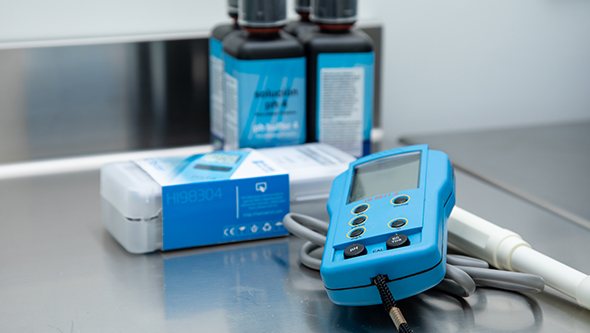
At La Huerta Grow Shop you can find reactive kits, portable meters, continuous meters and two I one pH and EC meters, as well as pH adjusters such as pH Down and pH Up. If you have any questions make sure to check in with our team of professionals, ready to help you out with any cannabis growing related issues!
